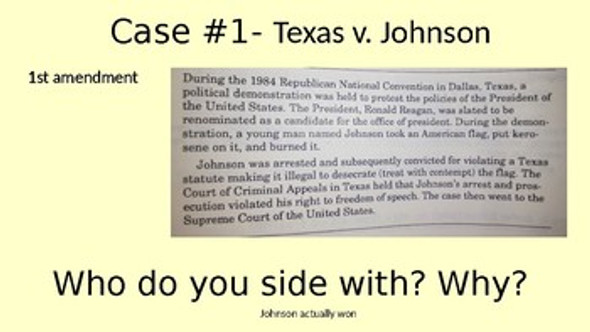Description
This lesson plan explores historical and contemporary Supreme Court Cases that deal with conflicts between National and State powers.
Students will analyze the following court cases: 1. McCullough vs. Maryland 2. Texas vs. White 3. Roe vs. Wade 4. Gonzales vs Oregon
By looking at these cases, students will understand how the Supreme Court has approached issues dealing with disagreements over the extend of Federal and State powers. This lesson includes a powerpoint to set up the topic. It also includes 4 one-page articles over each court case. Each article explains the events of the case and lays out the constitutional issue, such as "Can the state of Maryland tax a federally created bank?"
The article then lays out the argument for the federal side and the argument for the states side. After the lesson is set up, I like to divide my class into groups and I assign each group 1 case to read about and make a presentation to the class over. Students are to explain to the class what happened in their case and then they explain each side's argument (I also have them draw a poster to visually illustrate each side's argument).
Each group must finally explain to the class which side they think will win the Supreme Court case and explain why. After each case is presented, the rest of the powerpoint then explains to the class how the Supreme Court ruled in each case and why.
If I have time, I like to end the lesson by having each student write 1 paragraph on: "Choose 1 of the cases we looked at today. Explain whether you agree with the Supreme Court’s interpretation of what the Constitution allows) (not what you would want to have happened, what you think the Constitution allows.)"
For Texas teachers, this lesson directly addresses the following TEK:
G.9 Government. The student understands the concept of federalism. The student is expected to: (C) analyze historical and contemporary conflicts over the respective roles of national and state governments.
Created by Dan Nguyen - Visit My Store


















